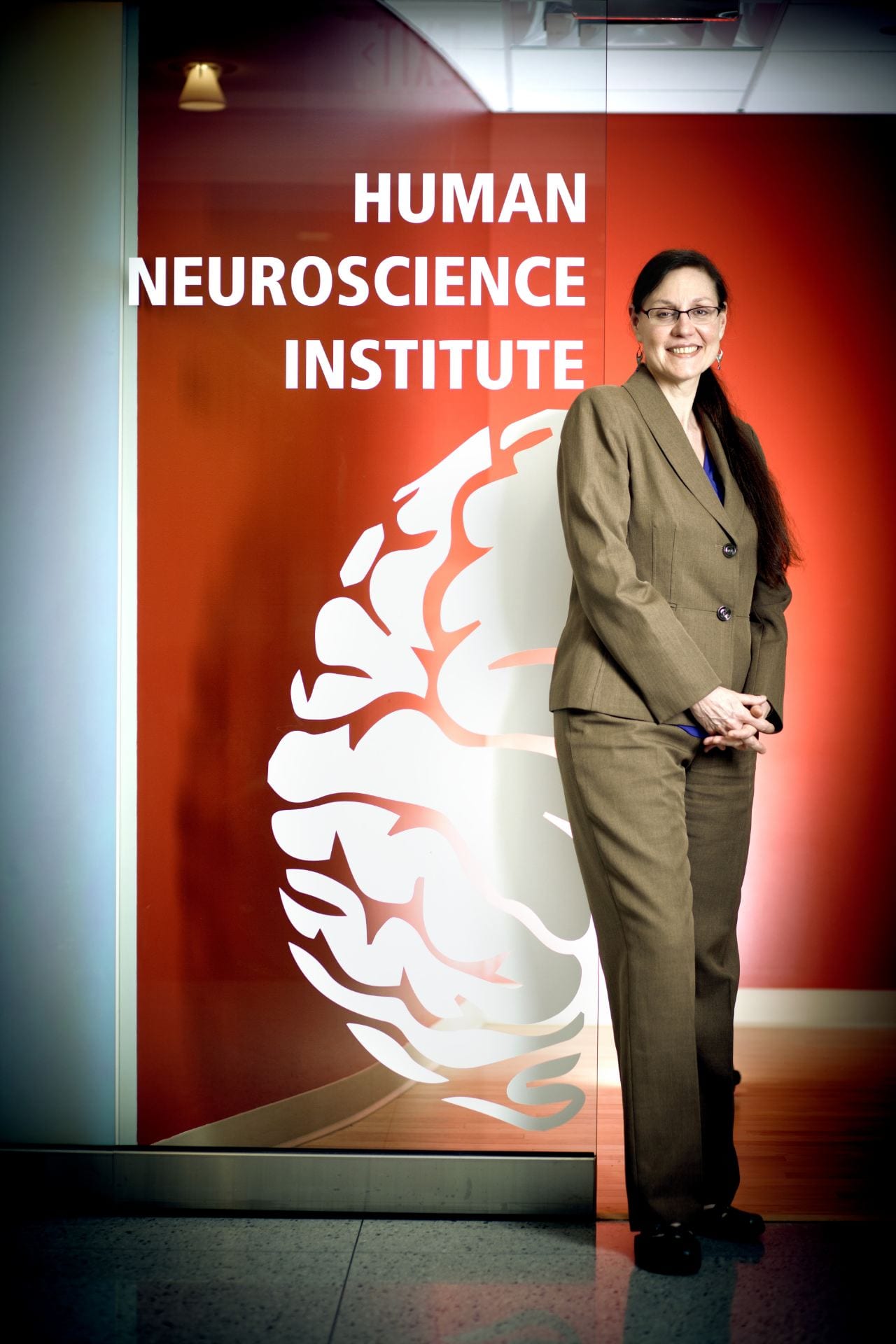
Valerie Reyna
Dr. Valerie Reyna is Lois and Melvin Tukman Professor and Department Extension Leader for the Human Development department of the Cornell University College of Human Ecology. She directs the Human Neuroscience Institute and co-directs the Center for Behavioral Economics and Decision Research.
What is your role with Extension?
I've been a Director of Extension since 2005, and one of the jobs that I have is to get the word out about what people are doing in the Human Development Department. Our Department is filled with people that go into the community and do a variety of things, a lot of which takes place in New York State. We integrate fundamental, basic science with societal problems. It's a lot of work to do both, but we think that's where a place like Cornell--and the College of Human Ecology--fill a huge need.
How has working with CCE has informed your research?
Working with young people, adults in the community, and Extension staff have taught us a great deal about how to promote healthy choices. For example, the content of the curriculum for reducing the risk of sexually transmitted disease and premature pregnancy has benefited from meeting with people on the front lines. We took their input and updated that curriculum. We took a curriculum, a multi-component curriculum that had some effect according to the CDC, and then we added our theoretical component to update it, magnify that effect, and make it last. We also developed an implementation manual. And all of this work benefitted enormously from having a lot of discussions with staff in CCE as well as the people from the community. I always tell my students to do a lot of listening because people will have crucial information about the nature of their life experience.
How has your research on decision making influenced public programming or outreach?
We have done laboratory demonstrations where we carefully test why people are making the choices they're making, including the brain and their behavior. From there we develop curricula and public health programs that our students deliver.
For example, one intervention we developed, which is on the best practices list of the CDC now, is for teenagers to reduce sexual risk-taking. The goal is to reduce premature pregnancy and sexually transmitted infections. It is a 14-hour-plus intervention that we train our students to deliver to youth clubs, CCE educators, New York State 4-H camps, and many other places.
We partner with CCE educators and we’ve gone into a variety of CCE sites over the years. For example, we've worked with Jackie Davis-Manigaulte from Cornell University Cooperative Extension - New York City.
What kind of value do those environments and those relationships provide your research?
I think it's very important to have the feedback go both ways. We really want to listen to people in the community. Their concerns inform my research and help me test my theories. Laboratory tests and real-world tests are an unbeatable combination: Lab tests tell you what is factually true, what causes human behavior. Real-world tests answer the question, is this really about something that's relevant? Do people think this is a problem?
For example, I recently had a graduate student, David Garavito, approach me, interested in concussions. And I knew concussions were a problem in the NFL, but the extent to which they’re an issue with ordinary middle school, high school and college students was really eye-opening. We, along with James Kim (a 2017 CCE summer intern), who joined us as an undergrad, performed outreach with the Ithaca Youth Bureau and designed and delivered a curriculum for 4-H camps and middle-schools.
All of this hasn't been done before. We build on health guidelines from the CDC, NIH, and other reliable sources, but we provide a psychological bridge between those facts and the human mind. We find that most people, especially young people, are in need of that bridge. We want to give them the facts and help them understand what they mean. What do they mean for your decisions? And how can we help you have insight into those facts, so that you can be the agent of your own choices that are healthy choices?
Read more about David Garavito’s work on concussions here. Read James Kim’s student journal about his summer internship experience studying concussions here.
How do you make complicated research more understandable for the general public?
Most adults want the bottom-line qualitative essence of information. They want to know what's the bottom line or the “gist” of what experts are talking about. For every domain that we study, whether it's healthy eating, fitness, concussion, or sexual risk-taking and HIV prevention, we say, what's the gist of this risk?
We understand that it’s not realistic, nor even healthy, to avoid all risk. You want to take some risks, but they should be healthy risks. So we try to distill the latest scientific information into its gist so that it can be in a usable form.
That's the centerpiece of our fuzzy trace theory. Fuzzy traces are the gist traces. It says get to the gist, teach the gist, illustrate the gist. Tell people the facts, but make sure you communicate the important essence of those facts, not just a lot of random things that may or may not be relevant to the decision you have to make.
For updates from Cornell University, College of Human Ecology’s Human Development department, including Dr. Reyna’s work, visit hdtoday.human.cornell.edu and subscribe to the HD Today newsletter.

